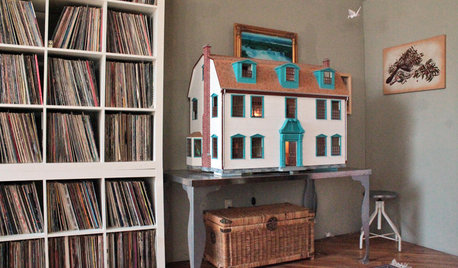How long do you let wiring go?
jgopp
12 years ago
Related Stories

MOST POPULARHouzz TV: Let’s Go Island Hopping
Sit back and enjoy a little design daydreaming: 89 kitchen islands, with at least one for every style
Full Story
DECORATING GUIDESBudget Decorator: Let’s Go Thrifting
Dip into the treasure trove of secondhand pieces for decor that shows your resourcefulness as much as your personality
Full Story
SAVING WATERHouzz Call: Are You Letting Go of Your Lawn?
Many facing a drought are swapping turf for less thirsty plantings. If you’re one of them, we’d like to hear about it
Full Story
MORE ROOMSA Bedroom Lets Go to Gain Elegance and Serenity
Cluttered and outdated, this Ontario bedroom needed purging before it could take on a more sophisticated style
Full Story
GREEN BUILDINGLet’s Clear Up Some Confusion About Solar Panels
Different panel types do different things. If you want solar energy for your home, get the basics here first
Full Story
DECORATING GUIDESEdit Keepsakes With Confidence — What to Let Go and What to Keep
If mementos are weighing you down more than bringing you joy, here's how to lighten your load with no regrets
Full Story
LIFEYou Said It: ‘Let It Go’ and More Tips From the Week
This week's stories reveal how you can switch up your surroundings to spark new ideas
Full Story
HOME TECHGo Ahead: Embrace Your Home Technology
It's time to make peace with the gadgets, wires and TV screens that serve us so well
Full Story
Still Going Warholian at Home
Pop artist's influence is lasting long beyond those first 15 minutes of fame
Full Story
ACCESSORIESHow to Hide Those Messy Wires
Untangle Yourself From Ugly Electrical Cords With a Few Tricks and Accessories
Full StorySponsored
Zanesville's Most Skilled & Knowledgeable Home Improvement Specialists
More Discussions








columbusguy1
bulldinkie
Related Professionals
Parkland Home Remodeling · Georgetown Kitchen & Bathroom Designers · La Verne Kitchen & Bathroom Designers · Ossining Kitchen & Bathroom Designers · Normal Kitchen & Bathroom Remodelers · Champlin Kitchen & Bathroom Remodelers · Deerfield Beach Kitchen & Bathroom Remodelers · Glendale Kitchen & Bathroom Remodelers · Upper Saint Clair Kitchen & Bathroom Remodelers · Joppatowne Kitchen & Bathroom Remodelers · Clive Architects & Building Designers · Dayton Architects & Building Designers · Lafayette Architects & Building Designers · Palos Verdes Estates Architects & Building Designers · Syracuse Architects & Building Designersworthy
brickeyee
GreenDesigns
worthy
jgoppOriginal Author
columbusguy1
cearbhaill (zone 6b Eastern Kentucky)
civ_IV_fan
farmgirlinky
brickeyee
energy_rater_la
farmgirlinky
greg_2010
columbusguy1
christiner
brickeyee
jannie
brickeyee
worthy
inox
worthy
concretenprimroses
brickeyee
Carol_from_ny